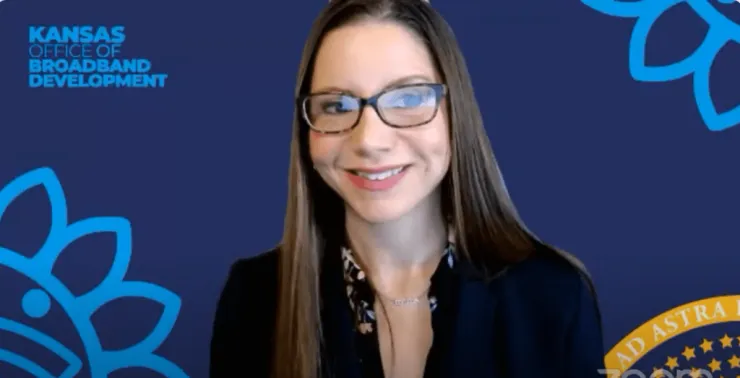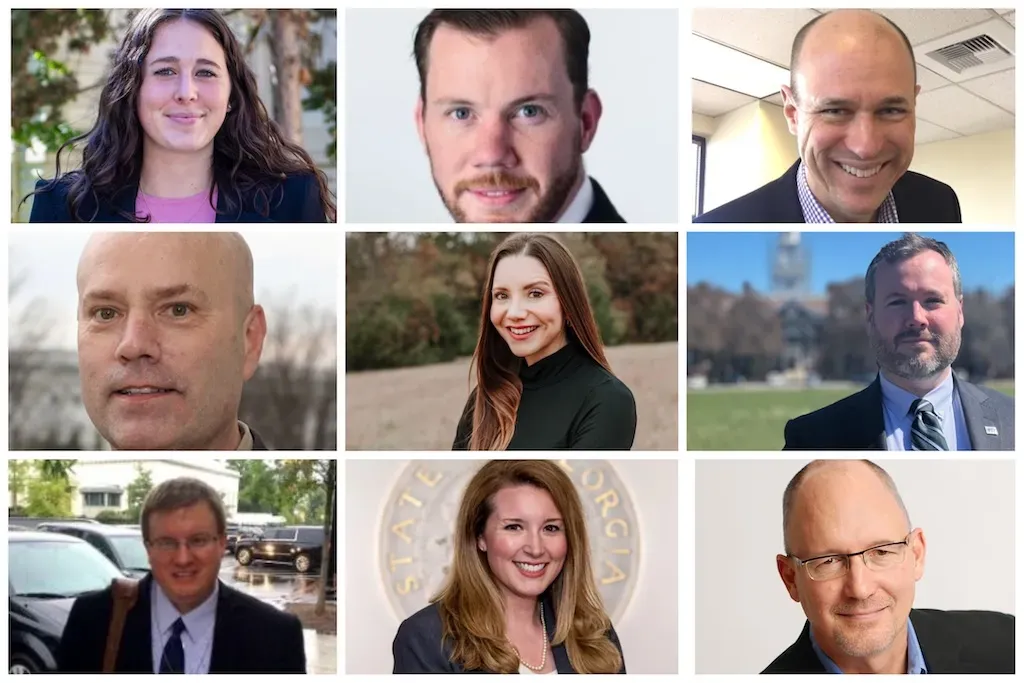State Broadband Offices Struggle to Involve Local Stakeholders in BEAD Challenges
Despite outreach efforts, only four counties, one native government, and two nonprofits submitted challenges to Kansas' state mapping fabric.
Jericho Casper

WASHINGTON, February 1, 2024 – State broadband authorities said Wednesday that they have received less engagement than anticipated from local stakeholders on the challenge process for the Broadband Equity, Access and Deployment program, but are actively working on rectifying the hurdles related to challenges.
These obstacles include the task of educating local governments and nonprofits about the importance of active participation, along with ensuring timely responses from these challengers, according to state broadband officers from eight U.S. states who convened for the Wednesday Broadband Breakfast Live Online event.
 Broadband BreakfastBroadband Breakfast
Broadband BreakfastBroadband Breakfast
“We did not have a lot of nonprofits or local governments participate,” reported Jade Piros de Carvalho, director of the Kansas Office of Broadband Development. Despite conducting 30 distinct outreach initiatives with local governments and the provider community, only four counties, one Native government, and two nonprofits ultimately submitted challenges to the state mapping fabric. The state is now in a 14-day rebuttal phase, scheduled to conclude on February 9.
Currently halfway through its 30-day challenge submission period, Delaware has garnered less than 100 challenges, with “very few” coming from nonprofits. Roddy Flynn, the executive director of the Delaware Broadband Office, anticipates the state will see a jump in participation in the final days of its challenge process, drawing parallels to the experience of the Kansas broadband office, where the final 24 to 36 hours resulted in five times as many challenges as the preceding 28 to 29 days combined.
In Kansas, the most common reason for rejection was that the challenger did not provide location specific evidence demonstrating that the qualified service was available. Those who initiated challenges early were given the chance to submit additional evidence based on the state’s feedback. However, many providers waited until the final day and missed the opportunity to do so.
Flynn and Piros de Carvalho stressed the importance of ISPs, nonprofits, and local and Tribal governments submitting challenges to state’s mapping fabric early in the challenge process, saying this allows state broadband offices additional time to rectify any errors in the submissions.
Flynn emphasized the need for extensive one-on-one coaching, based on his experience. To align nonprofits and local governments, he recommends a personalized approach before expecting participation, stating, even after conducting numerous webinars and meetings nationwide, the information might not fully resonate because these entities have myriad priorities.
Tom Reid, president and founder of the Reid Consulting Group, voiced shared concerns about the complexity of the process, echoed by those actively involved in it. He emphasized the challenges from a consumer advocacy perspective, noting a lack of engagement from government councils due to the process’ intricate nature. Consequently, the challenge process is tending to be more representative of ISPs.
Other state broadband officials present shared that they are waiting with bated breath for approval of their Volume One BEAD plans to embark on their challenge processes. In the meantime, these broadband authorities are actively engaging in public outreach campaigns, utilizing various methods such as mass emails, targeted one-on-one phone calls, and everything in between.
Indiana and Georgia’s broadband authorities both submitted their Volume One BEAD plans in early November, and are still awaiting approval.
“I’m going to be optimistic and say we’re hoping for as many challenges as possible, but I wouldn’t be surprised if we see a limited amount of challenges from the local government units and nonprofits,” said Lela Sibley, communications manager at the Indiana Broadband Office.
Indiana has tentatively announced its challenge process will begin on March 4. The state is hosting two webinars next week on how to use the state’s challenge submission software, and will also hold office hours at the end of February.
Georgia Technology Authority’s Director Jessica Simmons echoed, “We’ve done as much engagement as we possibly can so that when we actually do have the green light to go ahead and open our process, we’re ready to hit the ground running.”
Simmons mentioned that the state revised the deadline for providers to report planned service, extending it to December 31, 2025. This affords providers a longer timeframe to notify the state about any networks they intend to build out. Many broadband officers observed that this is the most common type of challenge they are receiving.
In response to a question posed by moderator Drew Clark, Broadband Breakfast CEO, the state officials said they have not observed internet service providers submitting challenges “in bad faith,” although Piros de Carvalho said challenges from ISPs have appeared defensive in nature. In Kansas, the SBO received just under 2,000 challenges, encompassing 277,000 locations. Of this total, one provider, who seemingly misunderstood the assignment, submitted over 84 percent—amounting to 234,000 of the total challenges.
The state officials raised concern over certain addresses that were omitted from the original mapping fabric. Presently, the prevailing message coming from the program’s governing body, the National Telecommunications and Information Administration, is if a location is not on the initial mapping fabric, it is out of luck of being represented in the challenge process at all.
“That’s a disappointing outcome and really undermines the goal of the internet portal,” said Flynn. “We’re hoping for some new guidance from [NTIA] at some point about how to work with these addresses that are found during deployment.”
State officials expressed concerns related to NTIA approving their Volume Two BEAD plans before their challenge processes conclude.
“If Volume Two gets approved during the middle of the challenge process, all of a sudden my 365-day shot clock to implement subgrantee selection starts, and I don’t have the list of locations yet. Every state is going to need every single one of those 365 days to get through its subgrantee selection process,” said Eric Frederick, chief connectivity officer for the state of Michigan. “That is going to be an issue for us, and I’m certain for other states too.”
Gregory Conte, director of the Texas Broadband Development Office, echoed this sentiment, saying the state is in “no rush“ to get their Volume Two plan approved. Conte has expressed concern directly to the NTIA about the feasibility of the 365-day timeline to select subgrantees.
The Texas SBO is currently overseeing the allocation of $5.5 billion dedicated to broadband expansion throughout the state, including a $300 million delta from American Rescue Plan funds, $1.5 billion recently authorized by the Texas legislature, and $3.3 billion allocated to the state through the BEAD program.
Conte said – as the state awaits ongoing feedback from NTIA – its primary objectives are carefully assessing locations to ensure there is no duplication of funding, and determining the appropriate and responsible utilization of these resources.
Meanwhile, the stage causing the greatest concern for director of the California Public Utilities Commission, Robert Osborn, is the phase following the 365-day subgrantee process. Newby said this stage involves negotiations about how to get the remaining funds awarded, saying the process will be time-consuming and require a significant amount of “hand-holding”. It remains a significant unknown factor in the process.
“There seems to be a lot of emphasis on getting [Volume One] done, getting it approved, and getting it out the door, but that is not the strategy of every state,” said Piros de Carvalho, highlighting that state broadband officials are juggling the implementation of multiple broadband funding programs at once.
Brian Newby, the director of North Dakota’s State Broadband Office, highlighted the advantages of being in the middle of the pack, saying states that find themselves further back in NTIA’s queue may experience significant benefits, as the process is expected to become more streamlined and it allows them to glean insights from the states that preceded them.
The state broadband officials commended the work NTIA is doing, acknowledging the current workload faced by the agency.
 Broadband Breakfast
Broadband Breakfast









Member discussion